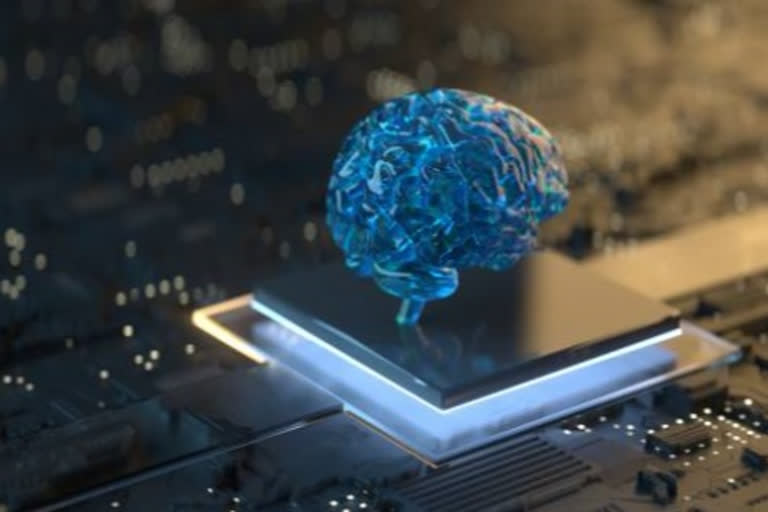Hyderabad: In The Lancet Digital Health, Carol Y Cheung and colleagues describe a deep learning model for the detection of Alzheimer's disease from retinal photographs. The authors trained a supervised deep learning algorithm using six retrospective datasets from Singapore, Hong Kong, and the UK. In the training of the model, 526 people with Alzheimer's disease and 2999 without the disease were enrolled and 12132 retinal photographs were used. In internal validation, the model achieved 83·6% accuracy, 93·2% sensitivity, 82·0% specificity, and an area under the receiver-operating-characteristic curve of 0·93 for differentiation of patients with Alzheimer's disease from those without. Performance was similar in smaller external validation sets from Singapore, Hong Kong, and the USA.
Retinal biomarkers have been attracting intense interest for the detection and diagnosis of Alzheimer's disease. The retina is a relatively accessible window to the brain, and there is evidence that multiple components of Alzheimer's disease pathology are associated with retinal changes that might serve as biomarkers, including amyloid β deposition, neurodegeneration, vascular pathology, and inflammation. However, no retinal biomarker has yet entered routine clinical practice, and results from hypothesis-driven biomarker development have sometimes been negative. The availability of large retinal imaging datasets has facilitated the development of a more hypothesis-free approach using computer vision, and other groups are developing similar algorithms, to the one designed by Cheung and colleagues. The retina is a relatively rich feature space; therefore, it is perhaps unsurprising that computer vision looks set to outperform individual biologically informed biomarkers. However, the black box nature of this type of technology, in which the pathological features on which classification depends remain unknown, might prove an obstacle to acceptability for clinicians.
The study by Cheung and colleagues has important strengths. The potential advantages of retinal photography over other biomarkers for Alzheimer's detection are clear: it is relatively cheap, scalable, and non-invasive. Moreover, their use of large international datasets provides compelling proof-of-concept that there might be translatable clinical use for their model, as shown by its robust performance in external validation. However, there are several aspects where evidence of real-world value would be required for clinical translation to be realised.
In clinical practice, the ability to distinguish healthy controls from those with established Alzheimer's dementia is not a problem that requires a technological solution; simple pen and paper cognitive tests have similar accuracy to deep learning technology. Conversely, there is an urgent requirement for biomarkers that can feasibly be deployed within existing health-care infrastructure to predict the development of dementia in the many patients presenting to memory services with mild cognitive impairment, who typically have to wait years to establish whether they have Alzheimer's disease. It is at this point in the diagnostic pathway that a technology, such as the model developed by Cheung and colleagues, might have the most immediate real-world use.
Social determinants of health, such as ethnicity and deprivation, are important sources of inequity in dementia risk and diagnosis. Novel technologies have the potential to either mitigate or compound these inequities, and it will be vital to assess bias and the effect on diagnostic equity in real-world settings, with adequate representation of those who tend to be excluded from dementia research, including people from lower income backgrounds, people who are Black, and people from south Asia.
The wide availability of retinal photography could, in principle, support detection of Alzheimer's disease at population level, allowing earlier access to support and treatment. This raises important questions that have yet to be resolved around what constitutes a timely diagnosis of Alzheimer's disease, and how effectively earlier detection improves quality of life, prognosis, and future health-care resource requirements. Careful ethical scrutiny of the role of such detection in those who are either not yet symptomatic or not yet seeking to access a diagnosis will be required.
Although retinal photography is relatively cheap, analysis of cost effectiveness requires modelling of downstream consequences. Those identified as being likely to have Alzheimer's disease would require additional clinical assessment and investigation, and this would have substantial implications for health-care resources, especially at a specificity of 82%, which would imply a high false positive rate at a population level. The increase in demand on diagnostic resources will need to be compared with the cost and health effect of remaining undiagnosed.
The current landscape of Alzheimer's disease research raises the exciting prospects of both disease-modifying treatments and personalised prevention strategies. Realising this vision will require feasible approaches to improve timely and equitable early detection and diagnosis of Alzheimer's disease at population level. Artificial intelligence approaches might be key to this, providing the translational gap is bridged by clear demonstrations of real-world value.
CRM reports grants from Bart's Charity and National Institute for Health and Care Research (NIHR) during the study; personal fees from GE Healthcare and Biogen, grants from NIHR, Innovate UK, Tom and Sheila Springer Charity, Michael J Fox Foundation, and Alzheimer's Research UK, outside the submitted work. IU reports grants from NIHR during the study.


